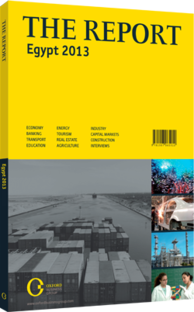Eastern Company: Consumer goods
THE COMPANY: Eastern Company (EC) is the leading tobacco manufacturer in Egypt, with an estimated market share of 81% in fiscal year 2011/12 (FY11/12). The industry caters to 31% of the population, who consume an average of 10 sticks per day. EC produces five main products: cigarettes, molasses tobacco, rolled tobacco, pipe tobacco and cigars.
REVENUES: The company’s sales revenue consists mostly of local cigarettes (81% of total sales in FY11/12) in addition to under-licence cigarettes (14%). Between FY07/08 and FY11/12, EC’s total revenue rose at a compound annual growth rate (CAGR) of 6% due to revenue CAGRs of 5% for local cigarettes and 16% for under-licence cigarettes. The main reason behind the increase in local cigarette revenue was a 9% rise in the price per pack (which more than offset a 3.7% drop in volumes resulting from higher smuggling activity due to weakened overall security, political unrest and a flawed Customs system following the 2011 revolution), while increases of 6% in prices and 9% in volumes contributed to the double-digit jump in sales of under-licence cigarettes.
EC’s revenue grew 10% year-on-year (y-o-y) in FY11/12, largely due to price hikes for local and under-licence cigarettes, up 16% and 15%, respectively, as volumes dwindled for the second year in a row, falling 6%, due to a stark decline in EC’s market share resulting from the increase in cheaper smuggled products. EC’s attributable net profit climbed 10% y-o-y, due mainly to a 10% rise in revenue and a 200-basis-point rise in operating margins that more than offset an 81% spike in net interest expense.
The government approved a 10% tax levy on cigarettes in June 2011, bringing the total sales tax rate on cigarettes to 50% of the retail price per pack in addition to a fixed rate of LE1.25 ($0.18) per pack. As part of the recent negotiations with the IMF for a $4.8bn loan package, Egypt’s cabinet had suggested a number of tax reforms, including raising the fixed tax rate on cigarettes to LE2 ($0.28) per pack for local brands and LE2.5 ($0.36) per pack for imported brands while keeping the variable rate at 50%. Historically, EC has not only managed to pass tax increases on to consumers, but has also raised its ex-factory prices through increased retail prices, supported by the inelasticity of demand for cigarettes.
DEVELOPMENT STRATEGY: Following a two-year deterioration of EC’s cigarette volumes to 75bn sticks in FY11/12 (for a cumulative drop of 13%), the company expects to sell an average of about 82bn cigarettes per annum for FY12/13 and FY13/14 due to improvements in the security situation and greater control of smuggling activity, which started to take effect at the end of FY11/12. As a result, EC expects turnover to increase around 15% y-o-y in FY12/13 due to an expected 8% y-o-y rise in cigarette volumes in addition to price increases for local cigarettes.
The company completed a LE5.5bn ($782.65m) capital expenditure (CAPEX) programme and fully relocated its operations to a new 360-feddan (1 feddan:1 acre) industrial complex in 6th of October City in early FY12/13. Following the expansion, EC’s production capacity grew from 85bn to 100bn cigarettes per year. Additionally, EC plans to spend a further LE1.7bn ($241.91m) over FY12/13 and FY13/14, the bulk of which is to be used for renovations and the replacement of some of its older machinery. The company expects its annual CAPEX bill to drop to an average of LE300m ($42.69m), 5% of sales, thereafter.
EC is in the process of establishing a company with a mandate to manage its vacated real estate assets, which have a total area of approximately 215,000 sq metres. The vacated facilities were valued at LE1.2bn ($170.76m) in August 2009 by Egypt’s Housing and Development Bank, though EC management now believes the facilities are worth more than that. Management says it does not see selling the land as an option in the short term, likely due to depressed land prices from present economic conditions. It is, however, looking to develop and/or lease the plots.
You have reached the limit of premium articles you can view for free.
Choose from the options below to purchase print or digital editions of our Reports. You can also purchase a website subscription giving you unlimited access to all of our Reports online for 12 months.
If you have already purchased this Report or have a website subscription, please login to continue.

